Today, with businesses relying heavily on advanced analytics for competitive advantage, predictive analytics as part of Business Intelligence plays an important role in increasing the accuracy of forecasting, whether in sales, market trends, or even the management of inventories. Using data, algorithms, and machine learning, predictive analytics offers the opportunity to come out with truly insightful decisions that will help organizations be at the helm in their respective businesses.
What is Predictive Analytics?
Predictive analytics includes taking data from history, statistical algorithms, and machine learning techniques to determine the probability of events in the future. It helps organizations answer some of the most important questions, such as:
* How will demand fluctuate next quarter?
* What inventory levels should we maintain to avoid stock-outs or overstocking?
* Which market segments are likely to grow?

If integrated into BI tools, predictive analytics becomes the commanding resource for effective and productive forecasting.
Successful Forecasting across Industries
Predictive analytics has revolutionized industries one after another. Here’s how it shines in retail and healthcare:
Retail:
Demand Forecasting: Predictive analytics helps retailers with the patterns of customer purchases, seasonal trends, and other external factors such as weather for demand forecasting. It reduces overstock and understock issues, therefore increasing customer satisfaction.
Example: An e-commerce company might use predictive analytics to have the right products in their warehouses at the right time, thus minimizing delivery delays.
Personalized Marketing: Retailers analyze customer behaviour and can predict which products a customer is likely to buy. This allows for targeted marketing campaigns and increased sales.
Healthcare:
Patient Care Optimization: Predictive models analyze patient history to anticipate potential health issues, thus enabling early interventions and better outcomes.
Example: Predictive tools are used in hospitals to reduce re-admission rates by identifying high-risk patients.
Resource Management: Forecasting is done by healthcare facilities to manage inventories of medical supplies to ensure the availability of adequate resources during crises like pandemics.
The Role of Machine Learning in BI Forecasting
Machine learning further empowers predictive analytics and develops models that can improve with time on their own without human involvement. This is how it enhances BI forecasting:
Dynamic Adaptation: ML algorithms adapt to new data so the forecasts remain valid when conditions change.
Pattern Recognition: ML does a good job of identifying complex patterns in large volumes of data that traditional statistical methods fail to identify.
Automation: ML can enable the automation of forecasting processes in businesses, saving time and reducing human error.
For example, a manufacturing company might use ML-driven BI tools to forecast equipment maintenance needs, reducing downtime and costs.
Tools and Techniques for Predictive Analysis
Numerous BI tools and techniques have been developed that bestow effective utilization of predictive analytics. A few popular ones are mentioned below.
Tools:
Power BI: Inbuilt predictive analytics functionality, from AI-driven insights to Azure Machine Learning integrations.
Tableau: Does forecasting and integrates seamlessly with R and Python for higher-order analytics.
Qlik Sense: Combining predictive analytics with an interactive dashboard, user-oriented for uncovering intuitive data trends.
Techniques:
Regression Analysis: It determines the relationship between variables to predict the outcome, such as future sales based on advertising spend.
Time Series Analysis: This analyzes data points in sequence, like monthly revenue, to predict future trends.
Clustering and Segmentation: This group’s similar data points together to find patterns, such as customer purchasing behaviour.

Benefits of Predictive Analytics in Business Forecasting
* Enhanced Accuracy: Less guesswork and decisions can be more valid.
* Cost Efficiency: Optimizes inventory, staffing, and resource allocation.
* Competitive Advantage: The businesses are able to keep ahead of the market trends.
* Customer Satisfaction: Ensures timely delivery and customized experiences.
Conclusion
With business intelligence and machine learning in tow, predictive analytics is revolutionizing forecasting for all companies. From foresight into future sales to product and inventory optimization, the applications vary widely and yield high impact. The organizations adopting predictive analytics stand to gain substantial control over informed and data-driven decisions to create persistent success in this ever-changing market.
Only when businesses invest in the right tools and techniques to stay ahead of the curve does the full power of predictive analytics become available. The future of forecasting lies in the seamless integration of BI and predictive technologies, a future to which every forward-thinking organization should aspire.
Author: Eric Xavier is a Senior BI Engineer at CMS. He specialises in Microsoft Power BI and is knowledgeable in many other BI platforms including Tableau, Qlik and Domo.
